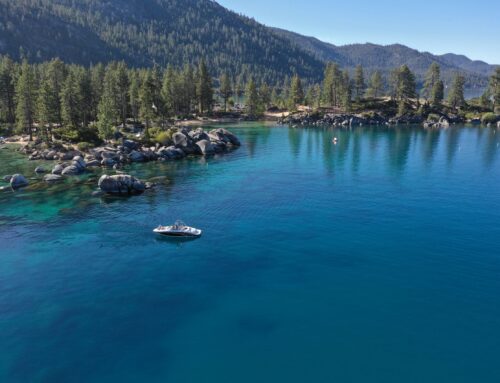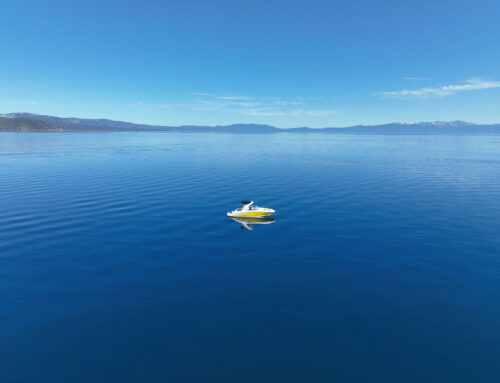Lake Tahoe is a natural wonder located in the Sierra Nevada mountain range straddling the border of California and Nevada. With a depth of 1,645 feet, it is the second deepest lake in the United States and the tenth deepest in the world. One of the most impressive features of Lake Tahoe is its clarity. The lake’s crystal-clear water is so pristine that objects can be seen at depths of up to 70 feet, making it a popular destination for tourists and locals alike. So what makes Lake Tahoe so clear? Let’s explore the science behind it.
Firstly, it’s important to understand that Lake Tahoe is an oligotrophic lake, meaning it has low nutrient levels, and is relatively unproductive in terms of plant and animal life. This is due to the fact that the lake is fed primarily by snowmelt and precipitation, which are naturally low in nutrients. The lack of nutrients means that there is little plant life in the lake to cloud the water, which helps to maintain its clarity.
Secondly, Lake Tahoe is situated at a high elevation of 6,225 feet above sea level, and is surrounded by steep, granite cliffs. This means that the lake’s watershed is relatively small, and the water that enters the lake is filtered naturally by the surrounding rocks and soil. As a result, the water is naturally very pure and free from sediments and pollutants.
Thirdly, Lake Tahoe has a unique water mixing process that contributes to its clarity. The lake is stratified into two distinct layers, with a warmer, less dense layer on top and a cooler, denser layer on the bottom. During the summer months, the sun warms the surface layer, creating a thermal barrier that prevents the water from mixing. This process is known as thermal stratification. As a result, the surface layer remains clear, while the bottom layer is rich in nutrients and supports a diverse ecosystem.
Finally, Lake Tahoe has benefited from a range of conservation efforts aimed at preserving its clarity. For example, in the 1960s, scientists discovered that the lake’s clarity was decreasing due to pollution from human activities, such as logging and development. In response, the Tahoe Regional Planning Agency was established in 1969 to regulate development and protect the lake’s environment. Since then, a range of measures have been implemented to reduce pollution and promote sustainable development in the region, helping to maintain Lake Tahoe’s clarity for future generations.
In conclusion, Lake Tahoe’s clarity is the result of a unique combination of natural and human factors. The lake’s oligotrophic nature, high elevation, natural filtering process, thermal stratification, and conservation efforts have all contributed to its crystal-clear water. While there are no guarantees that Lake Tahoe’s clarity will last forever, ongoing efforts to protect the lake’s environment give hope that this natural wonder will continue to amaze visitors for years to come.





